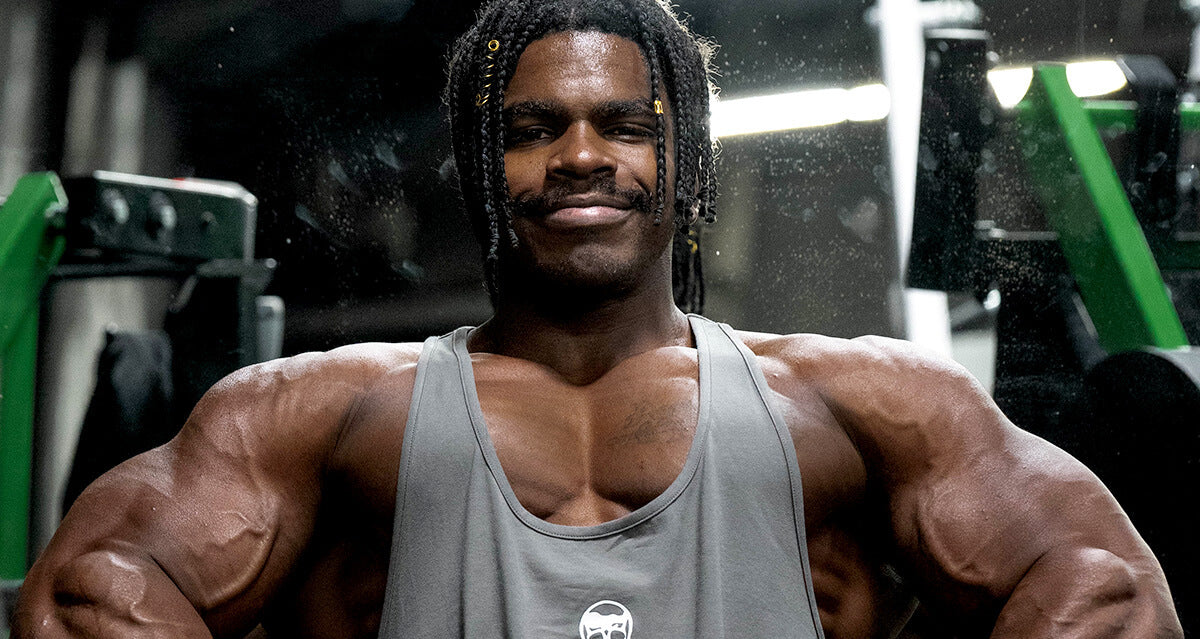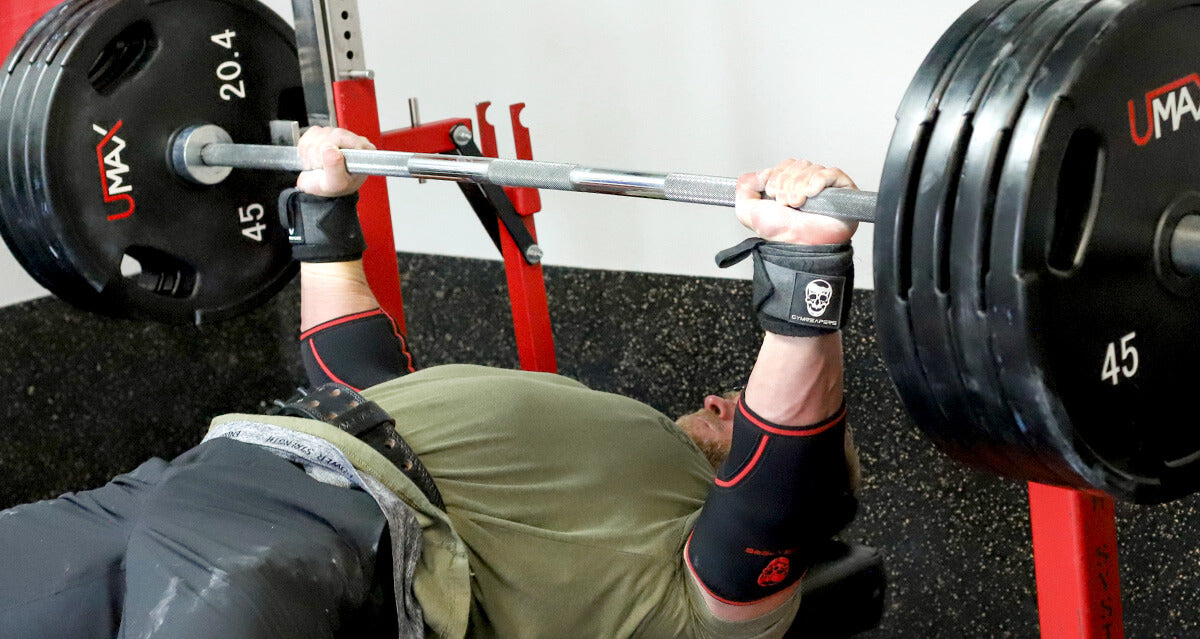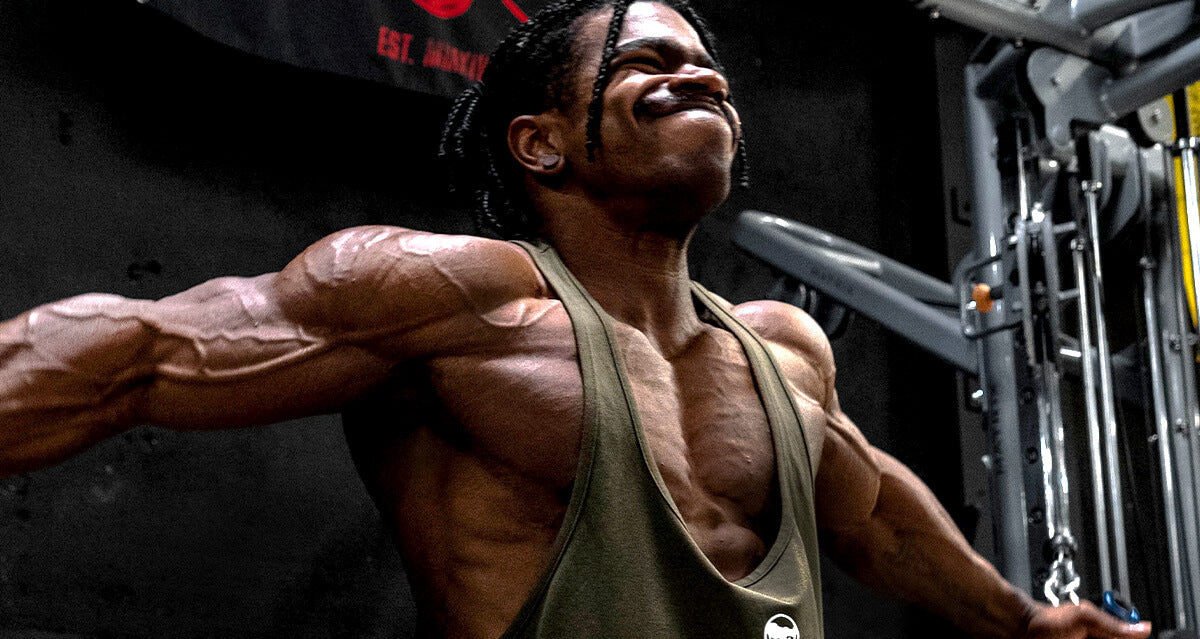Not all chest training offers the same results. You'll need specific chest exercises to target your inner chest and sculpt your pecs.
In this article, I’ll walk you through the six best inner chest exercises, teach you how to do them properly and explain how to integrate them into workouts that sculpt your pecs.
Key Takeaways
Anatomy of the Inner Chest
The chest muscles appear as large fan-shaped muscles spanning the front of your upper torso. The most apparent chest muscle is the pectoralis major, which sits atop the pectoralis minor.
The pectoralis major has three primary parts: the abdominal head (lower chest), the clavicular head (upper chest attached to the collar bones), and the sternal head (inner chest attached to the middle of the ribcage).
The inner chest refers to the section of the pectoralis major closest to the sternum. While no single muscle exclusively makes up the inner chest, you can use specific exercises to emphasize the inner chest (sternal) muscle fibers.
The pectoral muscle fibers run horizontally across the chest; therefore, exercises that bring the arms together in front of the body (adduction) or across the body (horizontal adduction) will primarily engage these inner fibers.
Best Exercises To Target Your Inner Chest
The six best exercises to sculpt your inner chest are:
1. Standing Horizontal Cable Pec Fly
The standing horizontal cable pec fly emphasizes the inner chest by bringing the arms together horizontally. This exercise allows for a full range of motion and constant tension on the chest muscles.
The other helpful aspect of this exercise is that the resistance of the cable is directly against the direction of the inner chest muscle fibers, making it efficient for targeting the inner chest fibers.
How To:
- Set the pulleys at chest height.
- Stand between the pulleys and grasp the handles with palms facing each other.
- Step forward slightly to create tension in the cables, with a slight bend in your elbows.
- Bring the handles together in front of your chest, keeping your arms stiff with a slight bend at the elbows.
- Slowly return to the starting position in a controlled manner.
Pro Tip:
Focus on using a deep inhale to stretch your pecs out as you return to the start position. When you fully expand your ribcage with air, it stretches and expands your chest muscle fibers.
2. Sternal Cable Press Around
The sternal cable press is a very effective single-arm exercise for targeting the inner chest. It combines pressing and rotational movements, emphasizing the contraction of the inner chest fibers.
The advantage of this exercise is that you can concentrate on training one side at a time to help negate any side-to-side imbalances.
How To:
- Set the pulley at chest height.
- Stand sideways to the cable machine and grab the handle with the hand furthest from the machine.
- Hold onto the handle with the palms facing the floor.
- Press the handle across your body and slightly upward towards your mid-pec level.
- Bring the handle back to the starting position in a controlled manner.
Pro Tip:
Think about reaching across to the other side of your body, as this helps emphasize shortening your inner chest muscle fibers at the end of the range of motion.
3. Chest-Focused Dips
Chest-focused dips are a variation of this bodyweight exercise that emphasizes the lower and inner chest by leaning forward during the dip motion.
How To:
- Grasp the parallel dip bars and lift yourself.
- Bend your knees and tuck your feet as a counterweight to lean forward.
- Lean your torso forward slightly and keep your elbows flared out.
- Lower your body until your upper arms are parallel to the ground.
- Push yourself back up to the starting position.
Pro Tip:
If you do not have the range of motion to go parallel with your upper arm, perform this exercise at an assisted dip station or limit your range of motion until you get more comfortable going lower.
If you have dip bars with a slight angle, you may get more of a stretch in your pecs if you set yourself between the bars so the bars converge in front of you.
4. Dumbbell Bench Press
The dumbbell bench press is a staple chest exercise that targets the entire chest, emphasizing the inner chest when performed with a slight inward press at the top of the movement.
How To:
- Lay flat on a bench with a dumbbell in each hand and feet flat on the floor.
- Press the dumbbells above your chest, palms facing forward.
- Lower the dumbbells to the sides of your chest, keeping your elbows at a 45-degree angle to your torso.
- Press the dumbbells back up, bringing them slightly toward one another at the top.
Pro Tip:
Set up a slight arch in your back to lift your ribcage. This helps deepen the stretch in your pecs in the bottom position, increasing the range of motion and improving the stimulus for more muscle gain.
5. Converging Chest Press
A converging chest press machine is built so the handles move towards each other at the top of the press.
The converging chest press machine mimics the natural movement of the chest muscles by allowing the arms to come together in front of the body, emphasizing the inner chest.
How To:
- Adjust the seat height so the handles are at mid to lower chest level.
- Grasp the handles with palms facing forward.
- Press the handles forward and together in a converging motion.
- Slowly return to the starting position.
Pro Tip:
As the converging chest press is a selectorized machine-based exercise, you can take advantage of this by implementing drop sets. Drop sets are a great tool for packing a lot of hard training into a short amount of time.
6. Hex Press
The hex press is a powerful exercise that targets the inner chest and triceps. It utilizes a neutral grip and brings the dumbbells together throughout the movement, emphasizing the contraction of the sternal (inner chest) fibers.
How To
- Lie flat on a bench with a dumbbell in each hand and your arms extended above you.
- Hold the dumbbells with a neutral grip (palms facing each other) and press them together so they are touching.
- Lower the dumbbells to your chest with your elbows bent and close to your body.
- Press the dumbbells upward and inward, maintaining contact between them throughout the movement.
Pro Tip:
Maintain tension in your chest at the bottom of the range of motion rather than allowing the weights to rest on your chest. This added time under tension in the stretched position of the pec fibers can stimulate muscle growth.
How To Create An Inner Chest Routine

Here is a quick start guide for building an inner chest routine that sculpts your pecs:
Frequency
Frequency is the first thing to decide as this dictates how much you can do and how spread apart each workout is. Most people should consider training their inner chest 1-3 times weekly.
If you are training the inner chest alongside other aspects of the chest for the rest of the week, consider specific inner chest training once weekly.
If you want all of your chest training to focus on the inner chest, 2-3 times weekly may be better.
Sets
For beginners, 6 total sets per week is a good starting point, whereas more experienced lifters will benefit from 10 to 15 sets of inner chest work per week.
Reps
For compound variations like the dumbbell bench press, it is best to use relatively lower reps (i.e., 6 to 10 reps), whereas isolation variations like the cable fly benefit from higher reps (i.e., 10 to 15 reps).
Loading
When loading weights for compound variations, you will use heavier weights and train in a lower rep range. For these movements, I recommend choosing a weight that allows you to complete the prescribed reps (i.e., 6-10) while leaving 2 to 4 repetitions in reserve.
When choosing weights for isolation exercises, you will use lighter weights and work in a higher rep range. With these movements, you should push yourself to technical failure, meaning you can’t do another rep with good form.
Progressions
To encourage continued inner pec growth, you must implement progressive overload. Progressive overload means increasing the demand on your chest muscles week-to-week to give your body a reason to adapt.
Focus on increasing the weight, reps, sets, or time under tension for each exercise weekly.
The Best Inner Chest Workouts To Sculpt Your Pecs
Here are two sample workouts you can use to sculpt your pecs:
Beginner Example
- Cable Crossovers: 2 sets of 12 reps
- Dumbbell Bench Press: 2 sets of 8 reps
- Converging Chest Press: 2 sets of 10 reps
Advanced Example
- Chest Focused Dips: 3 sets 10 reps
- Sternal Cable Press Around: 2 sets 12 reps
- Dumbbell Bench press: 2 sets 8 reps
- Standing Horizontal Cable Pec Flys: 2 sets 15 reps
Frequently Asked Questions
How Often Should I Train My Inner Chest?
Train your inner chest 2-3 times weekly, ensuring at least 48 hours of rest between sessions to allow for recovery and muscle growth.
Can I Develop My Inner Chest Without Weights?
Yes, you can develop your inner chest without weights using calisthenics or bodyweight exercises like push-ups, dips, and resistance band exercises that mimic the movements of weighted exercises.
How Long Before I See Results?
You will generally be able to see improvements in strength very quickly before you notice visible changes in appearance. You can see your gym performance increase within 1 to 3 weeks.
Visible results vary based on individual factors such as genetics, diet, and overall training consistency. Generally, you can expect noticeable aesthetic improvements within 6-8 weeks of consistent training and proper nutrition.
By incorporating these targeted exercises and following a well-structured routine, you'll be on your way to sculpting a well-defined inner chest. Remember, consistency and progressive overload are crucial to achieving your fitness goals.













Leave a comment
All comments are moderated before being published.
This site is protected by hCaptcha and the hCaptcha Privacy Policy and Terms of Service apply.